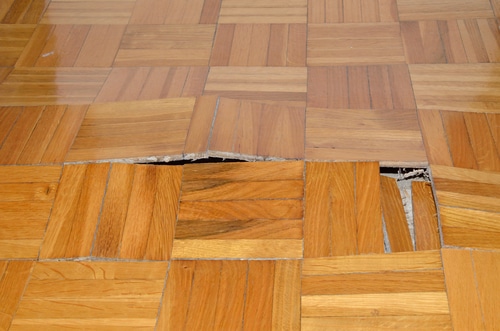Exactly how to Locate and Repair Service Water Leaks-- A Comprehensive Overview
Exactly how to Locate and Repair Service Water Leaks-- A Comprehensive Overview
Blog Article
Listed here in the next paragraph you might get additional good tips relating to Leaking water lines.

Early detection of leaking water lines can minimize a potential catastrophe. Some tiny water leaks might not be visible.
1. Take A Look At the Water Meter
Every house has a water meter. Checking it is a proven manner in which aids you uncover leaks. For beginners, turn off all the water resources. Ensure nobody will purge, utilize the faucet, shower, run the washing machine or dishwasher. From there, most likely to the meter as well as watch if it will alter. Since no one is utilizing it, there need to be no activities. That suggests a fast-moving leak if it moves. If you spot no modifications, wait an hour or two as well as check back once more. This means you might have a sluggish leak that could also be underground.
2. Inspect Water Intake
Assess your water expenses and track your water usage. As the one paying it, you ought to observe if there are any inconsistencies. If you spot sudden changes, despite your consumption being the same, it implies that you have leaks in your plumbing system. Remember, your water costs need to fall under the exact same range every month. An unexpected spike in your bill indicates a fast-moving leakage.
A steady rise every month, also with the very same habits, reveals you have a slow leakage that's also gradually rising. Call a plumber to completely examine your building, particularly if you really feel a cozy area on your flooring with piping below.
3. Do a Food Coloring Test
When it comes to water usage, 30% comes from commodes. If the shade somehow infiltrates your dish throughout that time without flushing, there's a leak between the storage tank as well as dish.
4. Asses Outside Lines
Don't forget to check your outdoor water lines also. Needs to water leak out of the connection, you have a loose rubber gasket. One little leakage can lose heaps of water and also surge your water bill.
5. Inspect and also Examine the Circumstance
House owners must make it a routine to inspect under the sink counters and also inside cupboards for any bad odor or mold and mildew growth. These 2 red flags show a leak so prompt interest is called for. Doing routine evaluations, even bi-annually, can conserve you from a major issue.
Much more notably, if you understand your home is currently old, maintain a watchful eye on your heating units, tubes, pipelines etc. Look for discolorations and also damaging as a lot of pipes as well as appliances have a life expectancy. They will certainly likewise naturally wear away because of tear and also put on. Don't wait for it to rise if you presume leaking water lines in your plumbing system. Call an expert plumber today so you don't end up with a horrible mess in your home.
Early discovery of dripping water lines can alleviate a potential catastrophe. Some little water leaks might not be visible. Checking it is a guaranteed way that assists you uncover leaks. One tiny leakage can lose loads of water and also increase your water costs.
If you presume dripping water lines in your plumbing system, don't wait for it to intensify.
How to Know If Your Home Has a Hidden Leak
Water Meter Reveals Inexplicable Water Usage
If you’d like to test whether or not there’s a leak somewhere in your home, you can do this using your water meter. Here is how to conduct the test:
Don’t use any water in your home for at least 30 minutes; this also means not turning on faucets or water-using appliances.
Go outside, and check your water meter for activity.
If your water meter shows that there was activity, even though no one was using any water, this proves that there is a leak in your home.Visible Mold or Mildew Growth
Leaks behind walls create moist, dark environments that allow mold and mildew to grow and thrive. Eventually, you might see mold growth forming on the wall closest to a hidden leak.
If mold is growing in an area that receives a high amount of moisture, such as a bathroom, it may simply be an indication that better ventilation is needed. However, if you see mold growth on a wall or the ceiling in an area where you would not expect, you probably have a hidden leak.
Musty, Mildew Odor
Sometimes you might not be able to see the mold or mildew that is growing as a result of a leak. However, the smell can give the problem away just as easily. If you catch a whiff of something musty, there’s a good chance that old water is collecting somewhere in your home that you can’t see.
Stained/Warped Walls, Ceilings, or Floors
When your home soaks up water, a variety of red flags can become visible, including ceiling stains, bubbling drywall, warped walls, and sagging floors. While these issues can be caused by excess humidity, they can also be signs that a pipe or plumbing connection has started leaking behind your walls.
Inexplicably High Water Bill
After a while, you get a general sense for what your water bill should be. If you own a pool or sprinkler system, your bill will tend to be higher during summer. However, if you receive a water bill that seems especially high, and you can’t figure out what caused it, then you may have a hidden leak somewhere that’s increasing your bill.
https://www.plumbingjoint.com/blog/2019/july/how-to-know-if-your-home-has-a-hidden-leak/

As a person who reads on Leaking water lines, I think sharing that piece of content was really useful. Are you aware of another person who is serious about the niche? Be sure promote it. Thank you for going through it.
Report this page